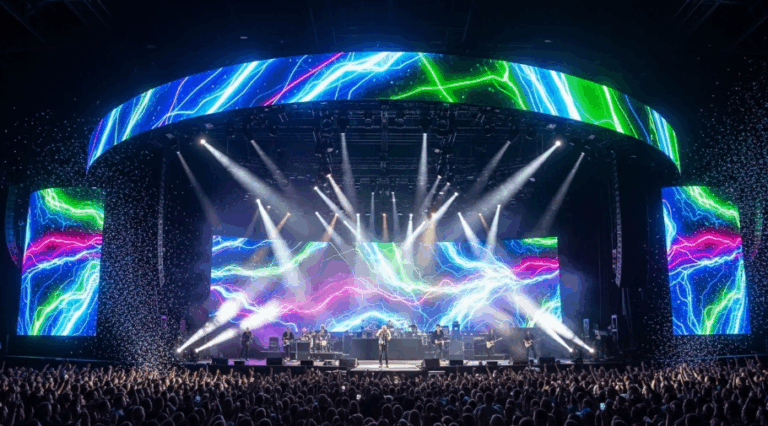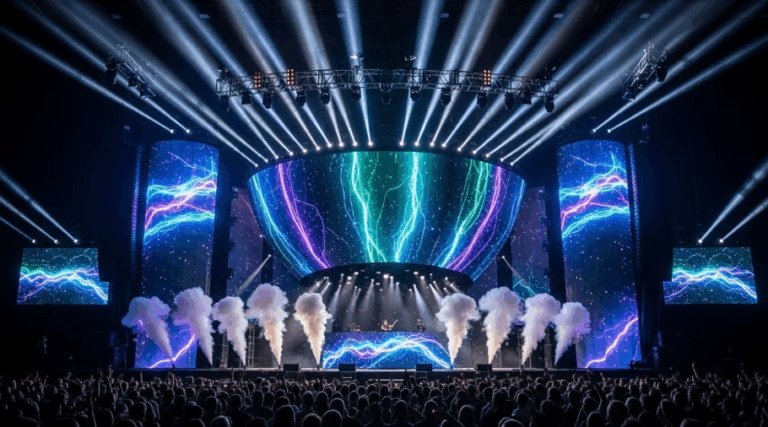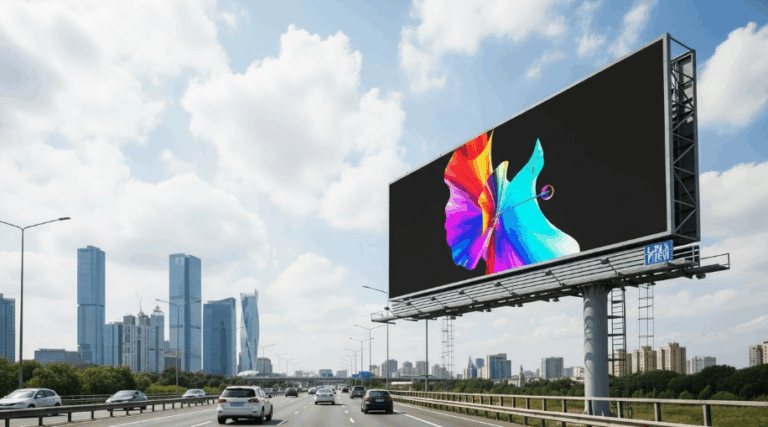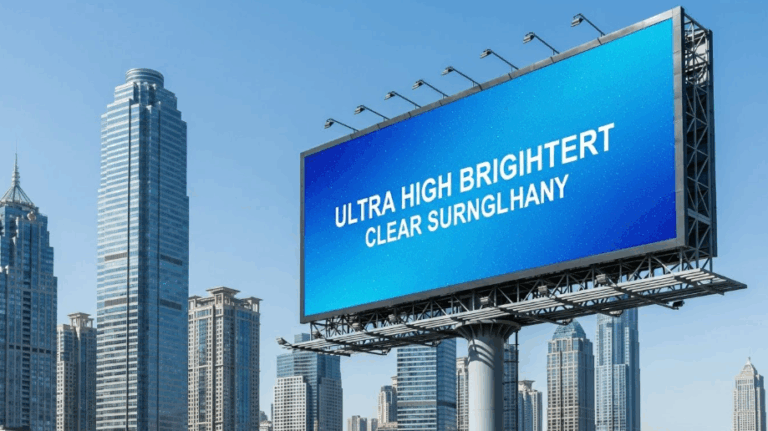Table of Contents:
-
What Is a High-Resolution Display?
-
Why Is High Resolution So Important?
-
How to Calculate LED Screen Resolution
-
What Is the Optimal Resolution for LED Displays?
-
Application Scenarios for High-Resolution LED Displays
-
Factors That Affect LED Wall Resolution
-
How to Choose the Right LED Panel Resolution
-
Conclusion: High-Resolution LED Screens—A New Chapter in Visual Experience
In today’s visually driven world, we are constantly surrounded by display technologies—from smartphone screens to outdoor billboards. The quality of these displays plays a key role in communication effectiveness and user experience. Among these technologies, high-resolution LED displays have emerged as a star performer, redefining our understanding of “clarity” with their impressive visual performance.
1. What Is a High-Resolution Display?
Simply put, a high-resolution display shows more pixels within a given physical space, resulting in more detailed, sharper images. For LED screens, resolution is typically expressed as width in pixels × height in pixels, such as 1920×1080 (Full HD) or 3840×2160 (4K UHD). The more pixels there are, the more detailed and smoother the image appears, bringing visuals closer to reality.

2. Why Is High Resolution So Important?
In the digital age, visual content is a bridge for communication. High resolution matters for several reasons:
-
Immersive Visual Experience:
Imagine watching a sports match and seeing the sweat on a player’s face, or a product ad showing the texture of the material. High resolution draws viewers in and delivers a lifelike experience. -
Efficient Information Delivery:
In fields like advertising and command centers, clarity enables faster and more accurate communication. For example, high-resolution surveillance footage in a traffic control center allows staff to identify issues promptly. -
Enhanced Brand Image:
In commercial settings, high-quality displays reflect professionalism and attention to detail, helping elevate brand perception. -
Close-Viewing Suitability:
Thanks to fine-pitch LED technology, people can now view LED screens up close without noticing pixelation. In such cases, high resolution is essential.

3. How to Calculate LED Screen Resolution
The resolution of an LED screen is determined by its physical size and pixel pitch (distance between the centers of two adjacent pixels).
Formula:
-
Width in pixels = Physical width (mm) / Pixel pitch (mm)
-
Height in pixels = Physical height (mm) / Pixel pitch (mm)
Example:
For a 3.84m × 2.16m LED screen with a 2mm pitch (P2), the resolution is:
-
Width: 3840mm / 2mm = 1920 pixels
-
Height: 2160mm / 2mm = 1080 pixels
=> Resolution = 1920×1080 (Full HD)
Note: Pixel pitch is a critical factor in determining resolution. Smaller pitch means more pixels in the same area, thus a higher resolution.
4. What Is the Optimal Resolution for LED Displays?
There is no one-size-fits-all resolution. The “best” resolution depends on:
-
Viewing Distance:
The closer the viewer, the higher the required resolution. Many manufacturers provide a recommended minimum viewing distance. -
Content Type:
Static content like text or charts may need lower resolution, while HD video or animations demand higher pixel density. -
Budget:
Higher resolution typically comes at a higher cost. A balance between performance and cost is key. -
Application Scenario:
Different scenarios have different needs (see next section for examples).
In general, fine-pitch LEDs like P1.x or even P0.x (pixel pitch <1mm) are ideal for close-viewing environments.
5. Application Scenarios for High-Resolution LED Displays
Thanks to their outstanding visual quality, high-resolution LED displays are widely used in premium settings:
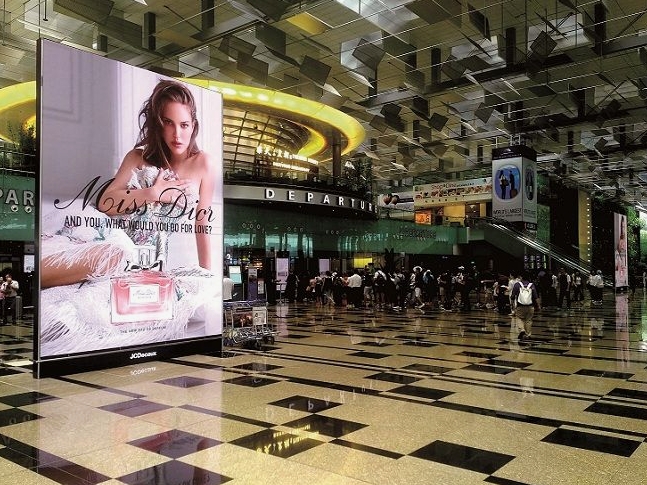
-
Shopping Malls & Wayfinding Systems:
Beyond advertising, high-res displays serve as wayfinding and info boards. In luxury stores, they showcase product textures and brand storytelling with exceptional clarity. A well-known example is the LED waterfall wall at The Dubai Mall.
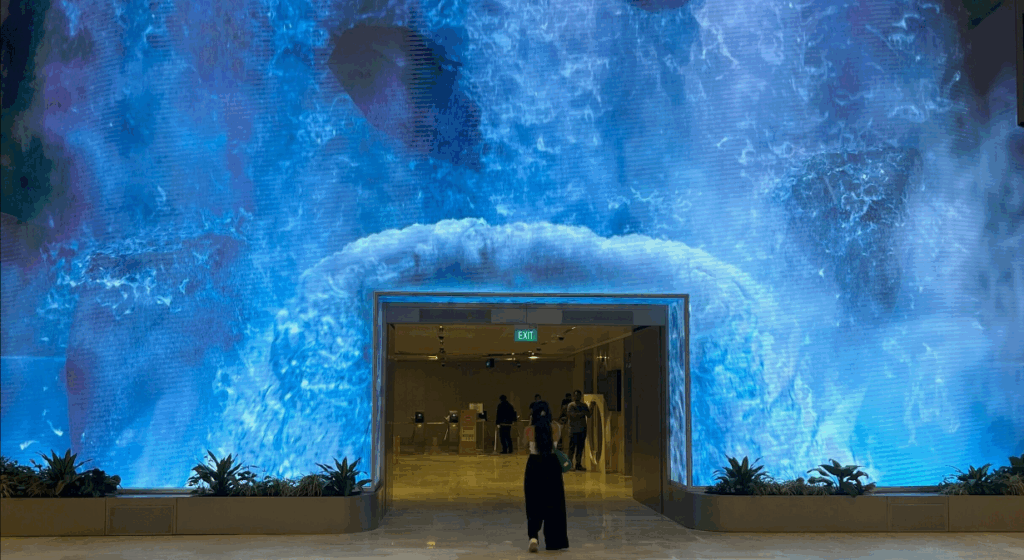
-
Exhibitions & Art Installations:
Museums, galleries, and science centers use high-res LEDs to bring artwork, history, and science to life. They’re also popular in concerts and theater stages for stunning visual effects.

-
Broadcast Studios & Conference Rooms:
High-res displays prevent visible pixel grids in camera shots. CNN, for instance, uses a P1.2 fine-pitch LED backdrop to enrich its broadcast environment.
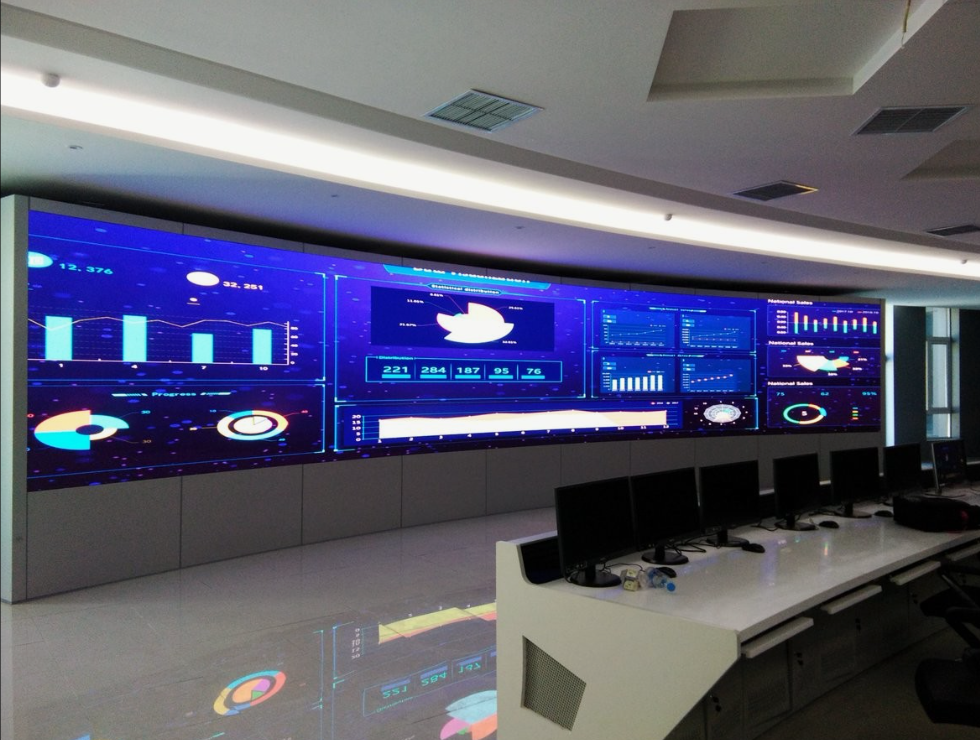
-
Control Rooms & Monitoring Centers:
In sectors like public safety, traffic, energy, and military, operators rely on ultra-clear, seamless displays for prolonged, close-up use. Resolution directly affects decision-making speed and accuracy.
6. Factors That Affect LED Wall Resolution

-
Module Size and Quantity:
LED screens are made of modular units. Their size and number determine the overall screen dimensions and resolution. -
Video Processor Capability:
High-res content needs a powerful processor to render smooth visuals with accurate colors. -
Signal Source Quality:
Even with a high-resolution screen, low-res source content will result in poor display quality. -
Installation Precision:
Proper installation ensures seamless joints and prevents resolution loss due to physical gaps. -
Calibration Technology:
Brightness and color calibration across modules enhances uniformity, which is crucial for a consistent viewing experience.
7. How to Choose the Right LED Panel Resolution
Consider the following:
-
Viewing Distance:
Define your target audience and their typical viewing distance. Use this formula:
Minimum viewing distance ≈ Pixel pitch (mm) × 1000
Or:
Optimal viewing distance ≈ Pixel pitch / 0.3–0.8 (based on human eye acuity and content complexity) -
Display Content Type:
The finer the content, the higher the resolution needed. -
Budget Constraints:
Balance resolution with affordability. -
Usage Scenarios:
Different environments prioritize different qualities—refer to Section 5. -
Future Upgrades:
If you anticipate higher content demands or extended use cases, plan for extra capacity.
Recommendation:
Consult a professional LED display provider. They can tailor a solution based on your needs and offer live demonstrations or case studies to help you compare resolutions visually.
8. Conclusion: High-Resolution LED Screens—A New Chapter in Visual Experience
High-resolution LED displays are not just a technological advancement—they’re transforming how we perceive information and aesthetics. With unmatched clarity, color performance, and immersion, these displays are revolutionizing everything from retail advertising to command centers and creative arts. Choosing high resolution means choosing a clearer, more impactful future.

